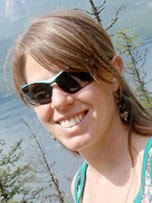The worst BC wildfire season on record was officially declared by the BC Wildfire Service in August.
Since April 1, 2017, the impacts include over 900,000 hectares of land burned, tens of thousands of people evacuated, homes and businesses destroyed, and timber and other natural resources lost. As recovery efforts continue and our region and province clean up, we must also face two critical questions: 1) Is this our new normal?, and 2) What can we do about it?
According to Mike Flannigan, professor of Wildland Fire at the University of Alberta, a hot and dry future points to more fires. At a recent webinar entitled The Future of Wildfire in Canada – Hot and Smoky? Flannigan set the stage by pointing out that despite better management and increased efficiency in firefighting, the area burned across Canada is increasing, particularly the catastrophic 3 per cent of fires responsible for 97 per cent of the area burned.
Of the four key factors of wildfire (fuel, ignition, weather, and people), Flannigan pointed to weather as a critical factor because of our changing climate. What exactly is the link between climate change and forest fires? Simply put, an increase in temperature will result in more fires and more area burned. Why? Three main reasons. First – increased temperature means a longer fire season, leaving more time for fires to start and burn. Second – temperature correlates positively with lightning. Increased temperature equals more lighting and thus, more potential fire starts. Third – increased temperature makes things drier and this drying effect increases the amount of fuel available to burn.
So with this in mind, what can we do about it? Thankfully, there is no shortage of available actions for everyone from individual citizens to community groups, to local government and industry. For example, climate change may not be something we will solve on our own, but across the Columbia Basin-Boundary everyone can continue efforts to mitigate (e.g., greenhouse gas reduction) and adapt (e.g., RDI’s Climate Change Adaptation Project) to climate change. Another example is emergency preparedness, where there are actions available for everyone, such as building a ‘grab and go’ emergency kit and storing it someplace handy in your house to be ready in the case of an evacuation.
Perhaps the most critical action is fuel management (i.e., actions that reduce the amount of material available to burn), particularly in the interface areas where our communities meet the forest. Planning and actions, including thinning trees, removal of woody debris, and public education all fall into fuel management.
Creative and innovative approaches are key, as is finding potential opportunities and benefits from collaboration between communities or with industry. For example, the interface could be selectively logged, creating an economic opportunity, or turned into recreation spaces that buffer communities with low-risk areas, while providing a social benefit.
There are tools and resources for fuel management and fire planning available from the BC Government, as well as from Fire Smart Canada, an organization led by not-for-profit Partners in Protection, that provides resources and information to help people understand how wildfires could potentially affect their communities. Many of these resources are scalable – meaning they can be used by communities, neighbourhoods, and individual homeowners (e.g., Fire Smart your Property).
As we head toward wetter weather and winter it is important that we remember and act on the lessons from this catastrophic fire season. Surely if we can spend over $550 million battling fires, we can look forward and allocate resources to preventing them?
Sarah Breen, Columbia Basin Rural Development Institute
